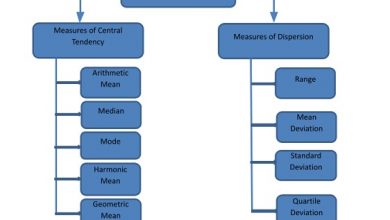What is river sampling/types/features
Without a doubt, sampling is a very important process within an investigation. Thanks to this process, the correct answers or the most actionable results can be obtained. That is why today we decided to learn more about River Sampling so that you can evaluate if it is what you need for your project.
River sampling is a type of non-probability sampling that came to be incorporated into the already impressive set of available data collection methodologies.
And while researchers understand the importance of randomly selecting a sample from an entire population (whatever that population may be), for others probability sampling is a difficult challenge to overcome, especially in today’s Internet-centric world.
The difference between non-probability and probability sampling is that the former does not involve random selection and the latter does. This does not imply that the non-probability samples are not representative of the population; it means, however, that non-probability samples cannot depend on the foundation of probability theory.
Although using the Internet only to obtain potential respondents means giving up some of the randomness itself, it does not mean that meaningful results cannot be obtained through river sampling.
What is river sampling?
River sampling is an online sampling method that recruits respondents by inviting them to the survey while they are doing some other online activity.
The invitation to carry out a survey can be through online banners, advertisements, promotions, offers and invitations placed on various websites.
Once their attention is captured and they click on a link, they are asked several screening questions and finally directed to a survey based on their responses.
Consider this analogy: You are a fisherman. You see where the fish gather in a particular river. You stop and cast your net in that river. You don’t know what kind of fish you can catch. You don’t know its color or its type. You don’t know if it has any remarkable features. You don’t know where he has been or what he has done before. However, you catch one. And once you catch it, you unhook it and throw it back. You probably won’t see it again. That’s what happens in river sampling in the world of market research.
Pollsters have no idea who is going to answer. They do not know the demographic or psychographic characteristics of the respondents and cannot contact them again after the survey is completed.
River sampling can serve as a way to complement other types of sampling .
Types
The cost effectiveness and flexibility of river sampling, in particular, will drive its popularity when it comes to making marketing decisions in a transparent online world.
Here are the types of river samples that can be implemented:
Layered River Sampling :
Samples are created in real time from online promotions using methods such as banners, pop-ups and hyperlinks. The agency carefully selects the websites based on the statistics available on the website visits / visitors.
By having the respondents, they are redirected to a portal, where they are selected to participate in a specific research project.
Knowing the viewers of each site and the response patterns of your visitors is a key part of effective recruitment.
Businesses wanting to conduct a river sampling survey rarely have access to the full range of sites they need or detailed demographic information on the visitors to those sites, so they are forced to work through carefully selected intermediaries.
River sampling for convenience :
Links are placed on various websites without prior analysis of the background of your visits / visitors. The main objective is to collect the maximum data with a minimum cost.
To increase participation rates, users are inclined to place banners on sites related to the subject.
Features
- To some extent, “river sampling” recruitment can be compared to recruitment on the street: respondents on the digital highway have the opportunity to participate in the research project.The representativeness of recruitment in the street is reduced by the non-response bias; the representativeness of recruitment in the river is biased by a self-selection bias, which can be considered a specific form of non-response.
- In the past, the origin of the people who would be part of a sample was highly questioned. If they came from social networks, for example, they were rejected, there were more restrictions. Today, given the shortage of panelists, many companies have chosen to acquire their samples from various sources, they are aware of the bias that may exist, and based on this they design their research.
- Respondents recruited by “river sampling” have less experience completing surveys, which means they take longer to answer.
- It must be said that the accuracy of the research results is compromised to a greater extent by the self-selection bias than by the non-response bias, so the use of river convenience sampling limits the scope of the research objectives. achievable and can only be used under strict conditions.


